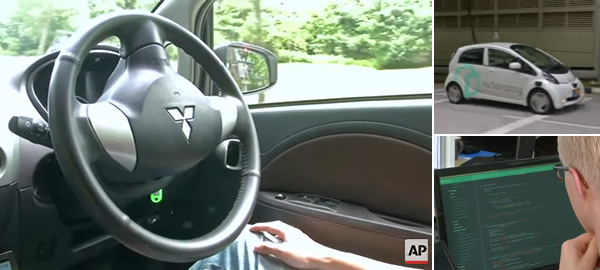With its advanced economy, highly skilled workforce and an ambitious development plan for the coming years, Singapore defines itself as a “Smart City”. This unique positioning in the region takes many forms, one of them is the introduction of autonomous taxis that are already being tested for an upcoming implementation.
A prominent American company in the Singaporean startup landscape aims at revolutionizing the transport industry in Singapore. With self-driving cars in testing phase in delimited areas of the city, nuTonomy wants to conquer the Singaporean market of self-driving taxis before the arrival of its giant rivals, Google and Uber.
A revolution of transport in Singapore
Prototypes are driving the first passengers around a small portion of the city to develop and test the technology in real-life situations. It takes some courage for passengers to get into the car, but after just a few minutes their doubts are relieved by the actual capacity to drive itself.
After this initial period of fine-tuning its technology, nuTonomy hopes it will be able to expand throughout the city and develop a fleet of a hundred autonomous cars by 2018. However, the market is not going to be easy to take over, between taxis, ride-hailing apps and self-driving cabs companies yet to come.
For now, nuTonomy comes in direct competition with ride-hailing apps in Singapore, like Uber and Grab. But, according to the startup’s COO, Doug Parker, this new technology will have a deeper impact on society than just through the transport market. Not only will it improve transports, but cities will be completely transformed by autonomous vehicles.
The technology still remains to become effective and to get adopted by a large part of the population. Yet, autonomous cars could actually change a lot of the current underlying paradigms of our way of life. Self-driving cars will probably heavily affect:
- how people move in short and long distance,
- how cars are designed and how streets and highways are built,
- how vehicles are commercialized, repaired and how they refuel (if they need to),
- how vehicles are parked and if they really need any parking at all,
- the very structure of the land transports…
Video from August 2016 by Associated Press




![Southeast Asia digital economy 2025 [report] Southeast Asia digital economy 2025](https://aseanup.com/wp-content/uploads/2016/06/Southeast-Asia-digital-economy-2025-150x68.jpg)




